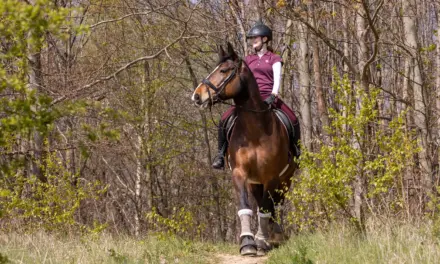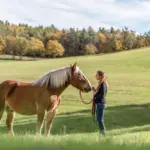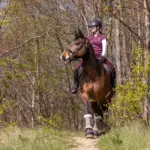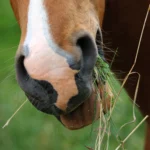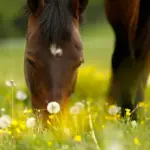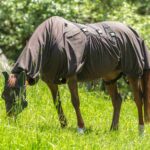Why effective hacking begins close to home
Key Points at a Glance
- Systematic preparation in a familiar environment lays the foundation for safe and relaxed hacks
- Consistent groundwork and in-hand training lay the foundation for trust and responsiveness.
- The rider’s leadership plays a key role in the horse’s success out hacking
- Simulated environmental challenges help prepare your horse for the real world
- Calm, experienced horses are great role models and help others stay relaxed
- Thoughtful tack choices and a mentally prepared rider make a big difference to safety out hacking
- Time invested in preparation pays off with relaxed and safe hacking experiences
Safety begins before you even set off
The quality of a hack isn’t decided out on unfamiliar ground, but days or even weeks earlier through systematic preparation. A horse that is inattentive, lacks respect or shows nervousness at home will often display these behaviours even more strongly out on a hack – with potentially serious consequences.
The familiar environment of the yard provides the ideal setting to establish all the key foundations, without additional stress factors complicating the training. It’s the place to spot and resolve problems before they become safety risks out on a hack. Systematic preparation also means that both horse and rider are mentally and physically ready for the challenges of hacking. A nervous rider will pass their tension on to the horse, whereas a confident, well-prepared handler radiates calm and stability.
Time spent on this foundational work is never wasted. It not only lays the groundwork for safe hacks, but also strengthens the overall relationship between horse and rider in a lasting way.
Groundwork the key to control and mutual respect
Solid groundwork is the backbone of any successful hacking preparation. A horse that can be reliably led, halted and asked to step back from the ground is much easier to control in stressful or exciting situations. These basic skills need to be firmly established in a familiar environment, so they remain dependable even under pressure.
Being able to stop precisely on a voice cue or a subtle signal through the lead rope can be lifesaving if a dangerous situation arises out hacking. The horse should be able to halt promptly and without resistance from any pace. This response needs to become second nature through consistent repetition. Whether in the round pen, in the arena, or simply on the way to the tie-up area – stopping reliably in any context is the foundation of safe handling.
Asking the horse to back up greatly enhances control and can be crucial in tight spots or when facing obstacles. A horse that is willing to move backwards can be manoeuvred out of tricky situations – which, out hacking, often arise more quickly than we would like. Teaching the horse to step sideways with either the forehand or hindquarters in response to a light touch with the schooling whip is another valuable exercise. It can help you manoeuvre the horse out of difficult situations if needed. It’s also worth practising asking the horse to step its right hind leg to the left while standing on its left side – and vice versa – since in tight spots, you may not be able to change sides to reposition the horse. A horse that panics when the whip is passed over its back poses a much greater risk in challenging situations.
Working with different stimuli in a safe, controlled environment helps prepare the horse for unexpected encounters. Fluttering ribbons or plastic sheets, open umbrellas, flying or popping balloons, barking dogs or dogs chasing balls – as well as other unfamiliar noises or sudden movements – can all be introduced gradually. The horse learns that not every new stimulus requires a flight response, and that the handler is capable of dealing calmly and confidently with such situations.
Building leadership skills: becoming a trustworthy partner for your horse
The quality of the rider’s leadership is often the decisive factor in how successful a hack will be. Horses are quick to sense whether their human partner is calm and competent, or uncertain and unprepared – and this perception strongly influences how they behave.
Consistency is one of the most important aspects of leadership. A horse that learns rules sometimes apply and sometimes don’t is likely to ignore them when it matters most. Clear, fair and consistently enforced boundaries create safety and build trust. Projecting calmness is an art that requires practice. In stressful situations, people often become agitated or raise their voices – and that energy is instantly picked up by the horse, amplifying its tension. Conscious breathing, steady movements and a calm voice can often have a surprisingly soothing effect.
Reliability shows itself in the small details – sticking to regular training times, consistent handling, and following through on what’s asked. A horse that experiences its human as dependable is far more likely to trust them in challenging situations. This kind of trust can’t be built overnight; it develops over time through consistent behaviour.
Simulated challenges to prepare your horse for real-world situations
Training with different environmental stimuli in the familiar setting of the yard is one of the most effective ways to prepare horses for unexpected situations. Typical hacking challenges can be simulated and gradually introduced step by step.
A colourful umbrella can be used to simulate a range of situations: when closed, it resembles a stick; when open, it mimics flapping objects in the wind. Opening and closing it produces unfamiliar sounds and sudden movements. With systematic desensitisation, the horse learns that even unexpected visual stimuli can be harmless.
Flags, plastic bags and fluttering ribbons simulate blowing branches, litter or other moving objects a horse might encounter out hacking. The horse learns to distinguish between harmless movement and genuine threats. This ability to differentiate is invaluable when out in the countryside.
Loud sounds such as banging, rattling, popping or unfamiliar noises help prepare the horse for traffic, construction work or other unexpected acoustic events. It’s important to build up the intensity gradually and give the horse time to get used to each new level of noise.
Inflated balloons move in particularly strange ways when caught by the wind and can burst suddenly with a loud bang. However, a horse that has already been desensitised to plastic bags and automatic umbrellas popping open will usually find a balloon far less of a challenge.
To simulate crossing a bridge, you can place a sturdy wooden board across two beams at either end. The hollow, rattling sound closely resembles that of a wooden bridge over a stream, and the slight height usually doesn’t bother most horses later. If you place a pole – such as one from a jump – under the middle of the board instead, it creates a see-saw effect that mimics unstable or uneven ground, offering valuable training for more uncertain footing.
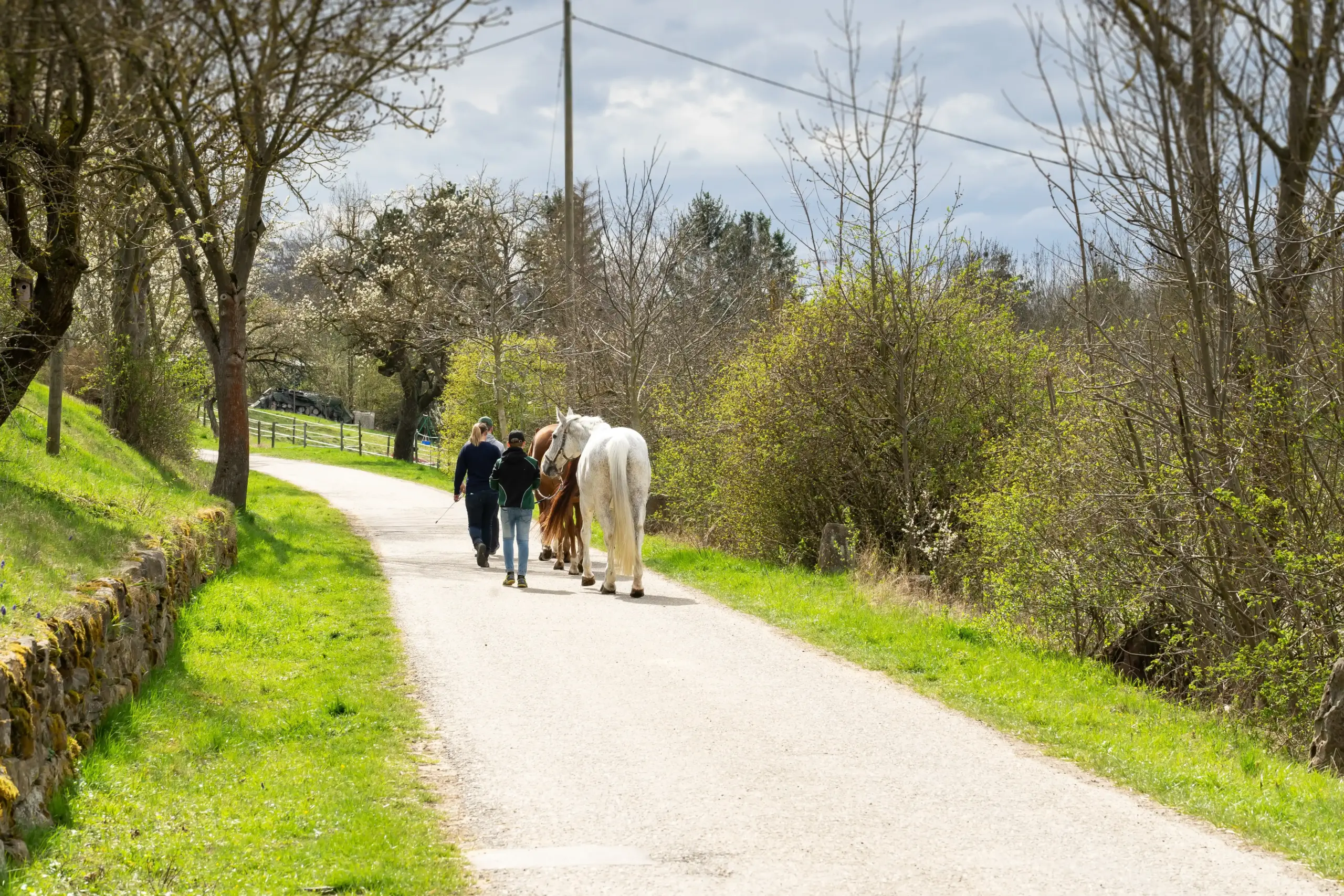
The herd effect: learning from more experienced horses
Horses are herd animals and often learn more effectively from one another than from humans. A calm, experienced companion can be a huge asset during hacking preparation, acting as a natural teacher for less experienced horses. The mentoring role of older, sure-footed horses should not be underestimated. Their calmness and confidence often rub off on younger or more nervous horses. A tense youngster will often become noticeably more relaxed and braver when walking alongside a steady senior horse.
Learning social rules within a group is also important preparation for future hacks. Keeping appropriate distances, respecting hierarchy, and behaving considerately towards others are all skills that can be practised calmly in a familiar setting.
However, group dynamics can also present challenges. Dominant horses may create tension, while insecure ones can unsettle the group. For this reason, training groups should be put together carefully to ensure a positive learning experience for all involved.
Being prepared the right kit and mindset for the rider
The rider’s preparation is just as important as the horse’s. Well-chosen equipment and the right mindset can make the difference between a relaxed outing and a stressful experience. A good pair of riding gloves should be considered essential for any activity out hacking – they provide a better grip on the lead rope and protect against injury if the horse suddenly pulls. Non-slip soles are equally important, as you need to be able to stand and walk safely on a variety of surfaces when out in the countryside.
Having a well-thought-out emergency routine gives you confidence and peace of mind. What should you do if your horse panics? How do you respond to injuries? Which emergency numbers are essential? These questions should be answered before your first hack – not in the middle of an emergency.
Clear goal setting helps develop realistic expectations and prevents feelings of being overwhelmed. The first aim shouldn’t be a two-hour hack, but a calm and relaxed 15-minute walk. Small, achievable goals create a sense of success and build confidence – for both horse and rider. The rider’s mindset shapes the entire experience. Starting out with fear or negative expectations is likely to transfer that tension to the horse. Positive visualisation, realistic planning, and trust in your own abilities lay the best foundation for a successful outing.
From preparation to relaxed practice
Systematic preparation in a familiar environment lays the foundation for years of relaxed and enjoyable hacking. A horse that has learned to trust its rider and respond appropriately to different stimuli is more likely to stay cooperative even in unfamiliar situations. The time invested pays off not only through safer outings, but also through a stronger overall bond between horse and rider. Trust, respect and communication are deepened – and they benefit every aspect of your partnership.
The best groundwork for hacking doesn’t start beyond the yard gate – it begins at home, with patient, consistent everyday training. This investment in preparation is the key to unforgettable and safe adventures out in the open countryside.
- Calmness starts before leaving the yard: preparing your horse for stress-free hacks - 8. July 2025
- Out of the arena: Why sport horses need to hack out - 8. July 2025
- Assessing the correct body condition in horses - 21. June 2025


